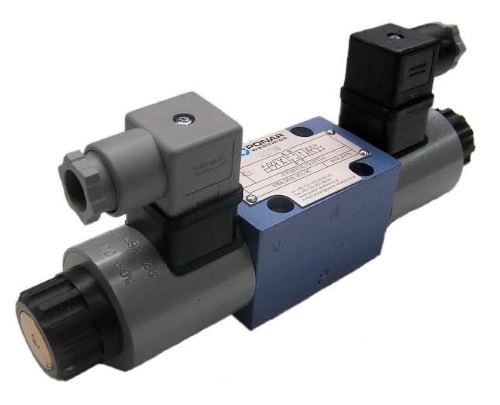Project Report For Hydraulic Valves Industry
Introduction
Project report for Hydraulic Valves Industry is as follows.
Hydraulic valves are mechanical devices used to control fluid flow within a hydraulic circuit or system. They can be used to completely shut down a line, redirect pressurized fluid, or control the flow rate to a specific area. These valves are available in a variety of styles and can be controlled manually or automatically via physical, mechanical, pneumatic, hydraulic, or electrical activation. Hydraulic valves must be able to withstand high fluid pressures, as the nature of many hydraulic systems requires pressures of 3,000 psi or higher. As a result, they are frequently made of steel, iron, or other metals that are strong enough to withstand continuous operation under pressurized conditions.

Hydraulic machinery uses hydraulic circuits to move heavy loads by pushing hydraulic oil under pressure through hydraulic pumps, pipes, tubes, hoses, hydraulic motors, hydraulic cylinders, and so on. This hydraulic circuit functions by utilising various types of valves that allow control of hydraulic circuit function based on the needs of the system’s end application.
Types of Hydraulic Valves Industry
Hydraulic valves come in a variety of shapes and sizes, including many that are common to other types of valves, such as ball, butterfly, bypass relief, check, needle, diverter, regulating, pilot-operated, proportional, and directional. From a broad standpoint, these hydraulic valves can be divided into three categories:
- Control Valves for Hydraulic Pressure
- Control Valves for Hydraulic Flow
- Directional Hydraulic Control Valves
Control Valves for Hydraulic Pressure: Hydraulic pressure control valves are used to regulate the fluid pressure that flows through hydraulic systems in order to keep that pressure at the desired levels set by the system operator. Fluid systems are typically designed to operate at a specific pressure range. These valves play an important role in preventing pressure increases that could lead to hydraulic fluid leaks or the bursting of pipes and tubing. They are also used to keep a set pressure in a hydraulic circuit. Relief valves, reducing valves, sequence valves, counterbalance valves, and unloading valves are examples of pressure control valves used in hydraulic systems.
Project Report Sample On
Hydraulic Valves Industry
Get Completely Custom Bankable Project Report
Market Potential Of Hydraulic Valves Industry
In 2017, the global control valves market was worth USD 7.11 billion. Over the forecast period, it is expected to grow at a CAGR of 6.5%.
Expenses

Product Cost Breakup

Reveneue Vs Expenses

Market Trend

The market is being driven by rising demand from end-use industries such as water and wastewater treatment, oil and gas, and energy and power. Furthermore, rising industrial automation adoption is increasing the use of smart control valves, which is expected to drive market growth over the forecast period. The increasing demand for energy and power from developing economies is driving the demand for control valves. These valves are also used in nuclear power plants, specifically in processes such as chemical treatment, feed water, cooling water, and the steam turbine control system.
Furthermore, the high-pressure, high-temperature and adverse corrosion conditions encountered with production and refinery platforms have increased the demand for control valves. These platforms are primarily used for offshore and onshore oil and gas operations. Most of the essential mechanisms in the oil and gas industries use these valves. It regulates not only the flow of fluids, but also their volume, direction, rate, and pressure.
The market has been divided into two segments based on product: linear and rotary. Linear control valves are further classified as a gate, diaphragm, and others, whereas rotary types are further classified as ball, butterfly, and plug. Because of rising demand from end-use industries such as oil & gas chemicals and energy & power in developing economies, linear control valves dominate the market.

